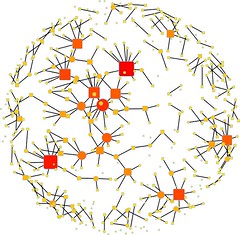On LinkedIn, to the Director of Stanford Media X
Director: Sometimes the reality of the world comes to you in strange places and without even looking for it. Waiting for my Visa. Long lines. No air conditioning. Bored. So I decide to talk with the guy ahead of me.
Although born in Shanghai, he came to the University of Minnesota as an exchange student in EE on a program initiated through the Microelectronic and Information Sciences Center. He moved to Austin Texas to work in the emerging semiconductor sector catalyzed by Sematech and the Microelectronic Computer Consortium. From there, he took the Silicon Valley leap and worked for several years at one of the Valley’s IC design firms. Now a US resident, he was at the Chinese Embassy getting documentation to take his family to Shanghai, where he was launching a company making chips for the cleantech industry. His new company is financed by both US and Chinese investors. In an instant his story is the metaphor of our future.
Media X at Stanford University, in responding to this challenge, has put together a remarkable group of global thought leaders and practitioners to unpack these frontiers and initiate new perspectives. Come join the discussion and share new visualizations of competitive advantage in the networked global economy. With a focus on ICT, mobile and greentech, the July 11 Innovation Ecosystems Summit provides insights about the new systems and networks. The program is structured to keep us all ahead of the game. The world is watching - not only at Stanford, but all of us - and looking for solutions that leverage knowledge-based solutions!
We've priced this workshop so you can come with a friend or colleague, because we know there will be a lot to talk about after the Summit. So, even though the early bird registration is closed, we’re giving you the opportunity to add an associate to your registration at a special guest rate of $95. Use Code: IEN2011. Contact me for group rates.
Although born in Shanghai, he came to the University of Minnesota as an exchange student in EE on a program initiated through the Microelectronic and Information Sciences Center. He moved to Austin Texas to work in the emerging semiconductor sector catalyzed by Sematech and the Microelectronic Computer Consortium. From there, he took the Silicon Valley leap and worked for several years at one of the Valley’s IC design firms. Now a US resident, he was at the Chinese Embassy getting documentation to take his family to Shanghai, where he was launching a company making chips for the cleantech industry. His new company is financed by both US and Chinese investors. In an instant his story is the metaphor of our future.
Media X at Stanford University, in responding to this challenge, has put together a remarkable group of global thought leaders and practitioners to unpack these frontiers and initiate new perspectives. Come join the discussion and share new visualizations of competitive advantage in the networked global economy. With a focus on ICT, mobile and greentech, the July 11 Innovation Ecosystems Summit provides insights about the new systems and networks. The program is structured to keep us all ahead of the game. The world is watching - not only at Stanford, but all of us - and looking for solutions that leverage knowledge-based solutions!
We've priced this workshop so you can come with a friend or colleague, because we know there will be a lot to talk about after the Summit. So, even though the early bird registration is closed, we’re giving you the opportunity to add an associate to your registration at a special guest rate of $95. Use Code: IEN2011. Contact me for group rates.
Media X at Stanford University: mediax.stanford.edu
 |
eScience NetworkFrom data shared by Matthijs, whom I met at the eSocial Science conference. This shows a bipartite network of people and projects funded by the UK eScience initiatives; the people are circles and the projects are squares, or maybe it's the other way around... The color and size of the nodes indicates degree; redder and bigger nodes have more connections than smaller and yellower nodes. Source: http://www.fli... |
No comments:
Post a Comment